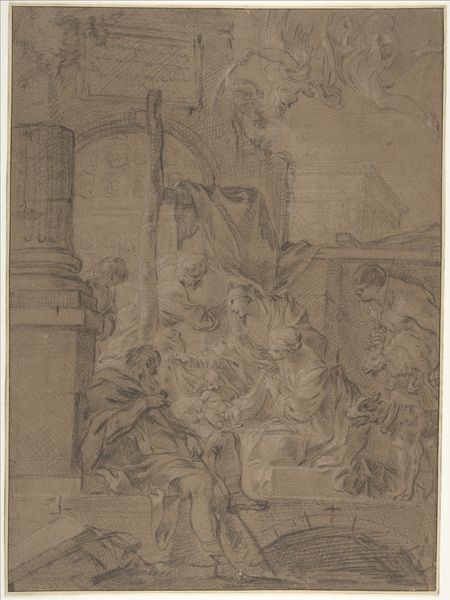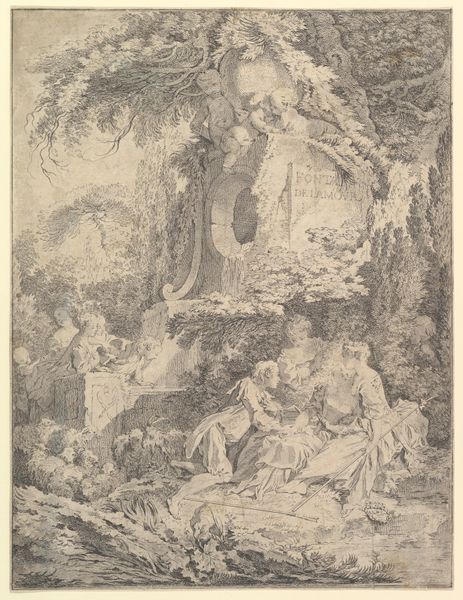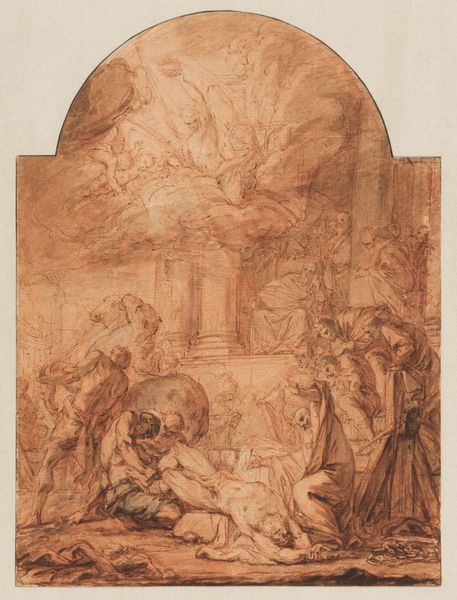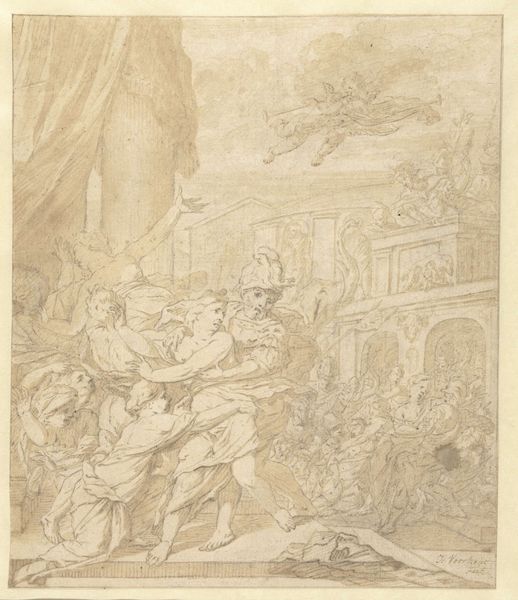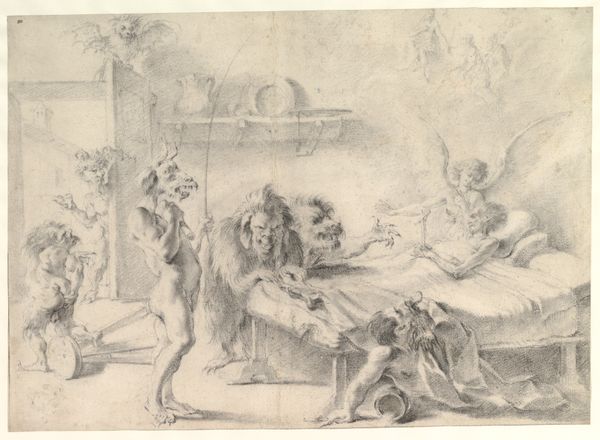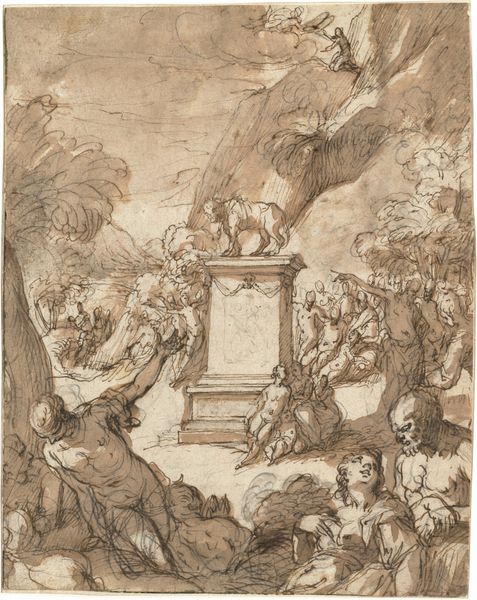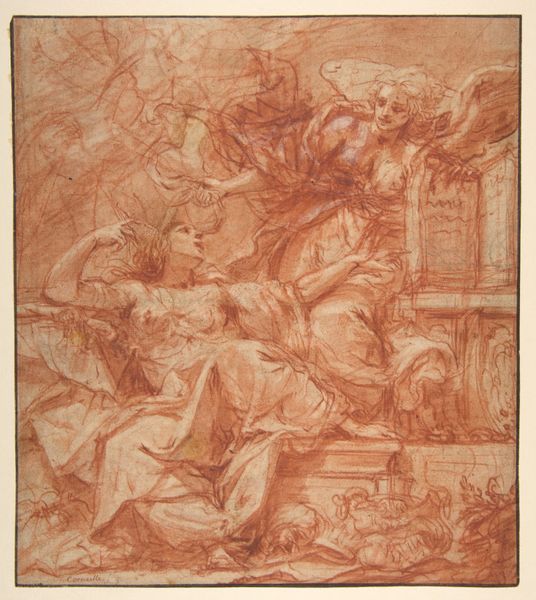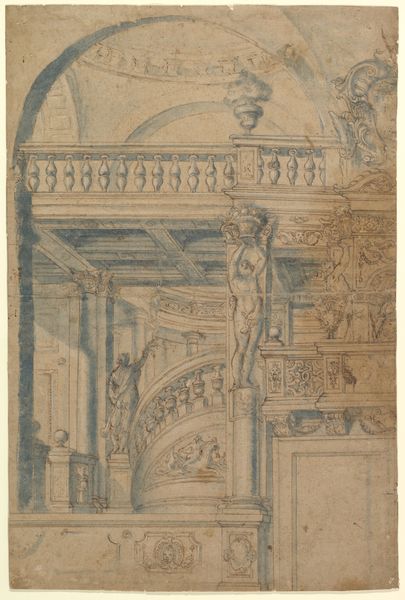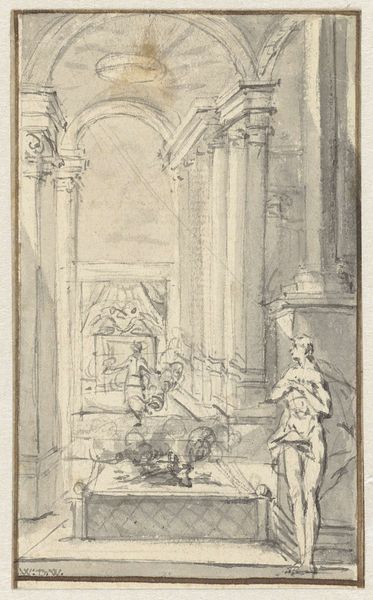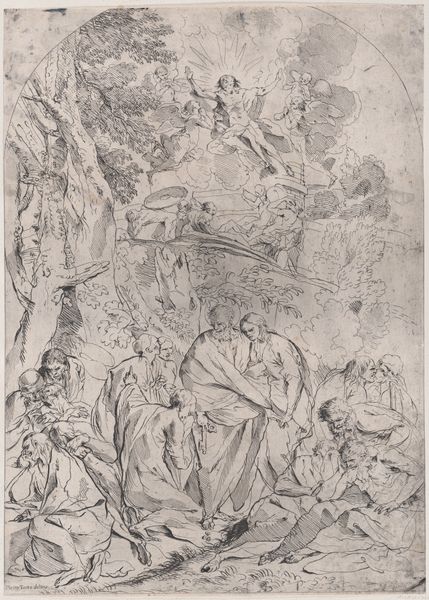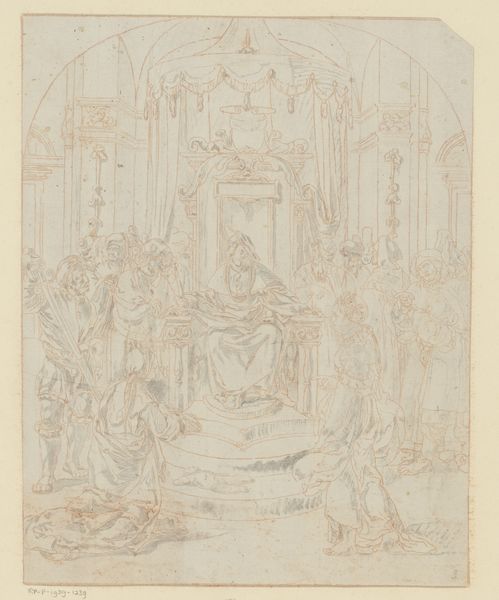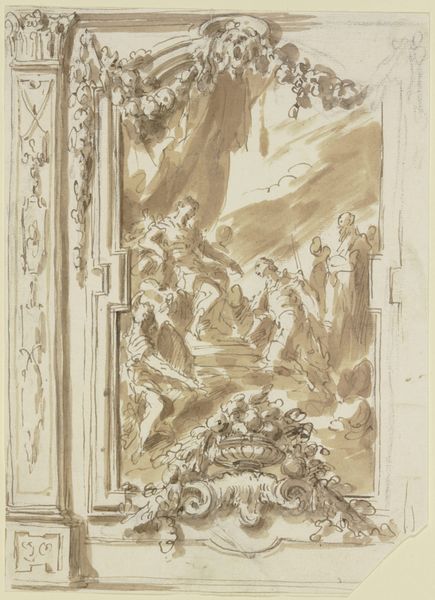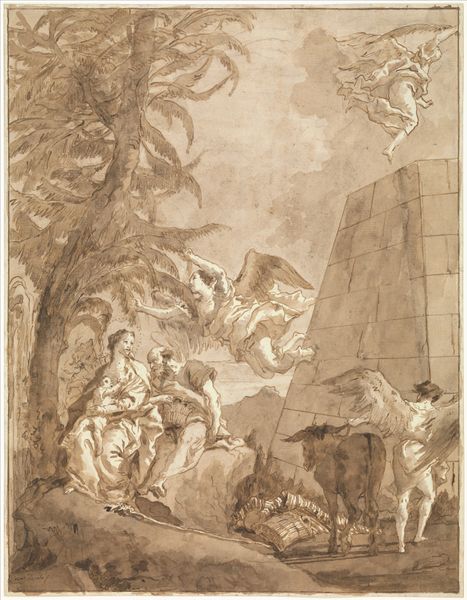
Dimensions: overall: 49.1 × 38.9 cm (19 5/16 × 15 5/16 in.)
Copyright: National Gallery of Art: CC0 1.0
Curator: This is Giovanni Battista Piranesi's "Grottesco with the Tomb of Nero," created around 1747, a compelling example of his architectural fantasies rendered in pencil, graphite, and etching. Editor: Fantasies indeed! At first glance, it's this beautiful ruin...or rather, a suggestive sketch of one. All these monumental forms fighting for space on the paper, a touch unsettling but undeniably gorgeous. Curator: The piece showcases Piranesi's deep engagement with Roman antiquity, but through a filter of Romantic sensibility. It represents the Tomb of Nero as an elaborate, almost theatrical structure, teeming with detail. We must consider the context: Piranesi created these imaginary depictions based on fragments of buildings, playing with the viewers perception of actual history, he essentially re-imagines, and to a degree challenges it. Editor: I see that now, because that’s what grabbed me! It has this quality of being incomplete, not quite defined...but I don't think it detracts at all. It leaves space for the imagination. Are those little figures scurrying around, are they frightened, perhaps worshipping the tomb or simply being a general rabble of Romans? Curator: Precisely! This blurring of historical accuracy allowed him to engage with themes of power, decay, and the sublime. It reveals an active interest in using visual media to reflect on socio-political conditions, as well as inviting audiences to construct or question accepted historical and political narratives. Editor: Right, the piece speaks to how we remember the past and use art to connect it with the present! The monumentality is what lingers. Something massive and ancient, but fragile, ephemeral almost...like a half-remembered dream of an empire, all that might and majesty turned to beautiful, suggestive ruin. Curator: Exactly, it reflects the cyclical nature of civilizations, empires, as Piranesi implies with this image! It acts as a silent critique of present times by referencing this imposing past. Thank you. Editor: Thanks! This was such a joy. I’ll go have a similar chat now with a cheese danish, if you don’t mind!
Comments
No comments
Be the first to comment and join the conversation on the ultimate creative platform.
